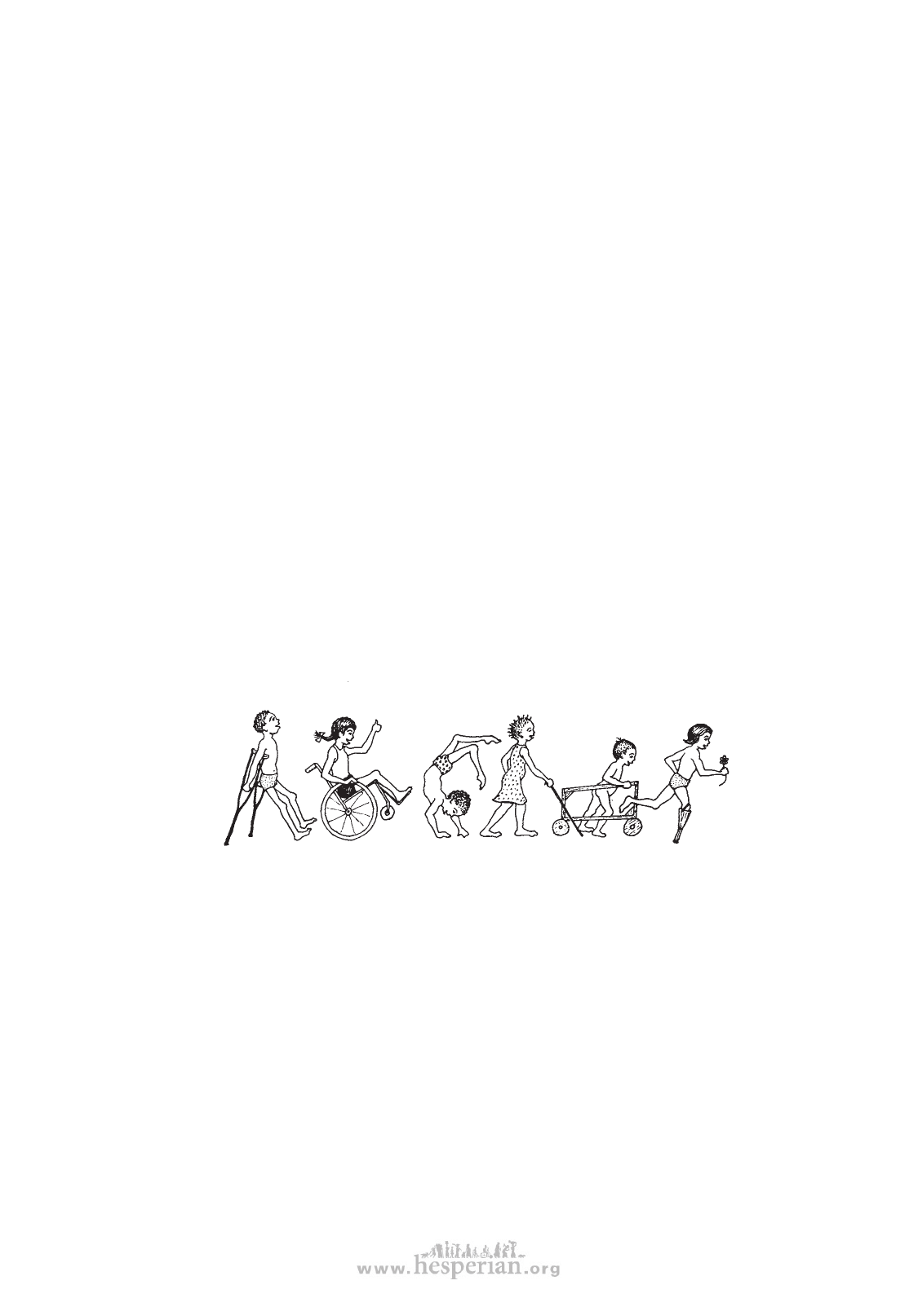
Management and job assignment
A SHOP FOR MAKING AIDS 537
How work is organized in the shop, and who organizes it, are decisions that need
to be carefully discussed and decided by the group. Some programs have someone
acting as ‘boss’ or ‘foreman’ who assigns each person a job. This may be more
efficient. But programs that are ‘people centered’ prefer a more cooperative approach,
where the whole group is involved in making key decisions. With such an approach,
a coordinator may be chosen (or different coordinators can be chosen for different
responsibilities). The coordinator does not give orders, but rather takes orders from the
group. This approach is usually less efficient and more confusing. However, it is more
enjoyable. Workers tend to take more interest, responsibility, initiative (and time off)
than they do under a boss.
Also, the team needs to decide about how work is divided, and who does what jobs.
Some workshops employing disabled persons use an ‘assembly line’ approach. Each
person does a simple, repetitive job, such as cutting out one piece of tubing time after
time or putting spokes into wheels. This approach requires relatively little training for
each worker. Mentally slow workers who learn by repeating something over and over
again often do well working this way.
However, most people work better when they are able to make something from
beginning to end. Then they can share the satisfaction of a child and her family when
a wheelchair or brace or toy they made looks nice and works well. In PROJIMO,
whenever possible, workers (individually or in pairs) are responsible for the complete
production of an aid. They start by helping to evaluate the child’s needs and end by
seeing how well the finished aid meets those needs. This way, each worker can see the
personal value of each aid that he or she makes. This approach may be less efficient,
but it is more satisfying. Thus the team watches the results rather than the clock, and
works first for the people, not the money. This personalized approach is very important
to a program designed to serve those in greatest need.
PART 3 of this book provides information on two main areas: (1) non-surgical
orthopedic procedures (straightening contractures and club feet with casts), and (2) the
production of low-cost rehabilitation aids. All of these things can be done in a village-
based workshop such as the one just described. However, many of the aids can also
easily be made at home by the family of the child.
To encourage family participation in making aids, and later repairing them, mothers
fathers, sisters, or brothers can be invited to the shop to help build the aid. Or
disabled children can help make their own aids. Some of the best workers in the
PROJIMO workshop today began as young people who helped make their own
crutches or wheelchairs—and then began to help make aids for others.
The ideal is that everyone does what they can to help and learn from each other: one
big, human family working together and enjoying each other.
disabled village children